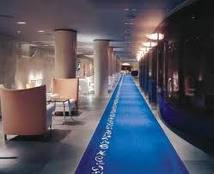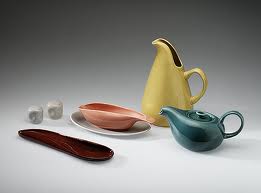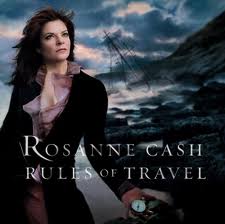In February, Alexandra Lange created a storm with an essay on Design Observer suggesting that the New York Times architecture critic, Nicolai Ouroussoff, is not good enough:
Ouroussoff has an opinion about design, but his reviews offer not much more than that, opinion. His approach -- little history, less politics, occasional urbanism -- shrinks the critic's role to commenting only on the appearance of architecture.
She described a man whose feet don't touch the ground as he jets around the world writing about one superstar skyscraper after another. In my mind I have an image of a man in a Prada suit dangling from a glass facade by a V.I.P. pass attached to a lanyard.
She was concerned that he has no deep engagement with New York City: "I don't recall him ever referring to his neighbourhood, to a favourite park or plaza or to the pedestrian everyday city that the rest of us occupy."
And that his writing is lifeless, that it's polished to a polite sheen, but has no bite or character.
Mark Lamster and Lange have instituted a "Lunch With The Critics" column on Design Observer, discussing, on location, architectural projects that are creating an impact. Recently they discussed Park 51, the proposal for a mosque and community center in lower Manhattan.
"It's been gratifying to see our mayor so heroically defend the project, but I'm rather surprised -- or perhaps not surprised -- that we haven't heard from Times critic Nicolai Ourousoff on the matter," said Mark Lamster.
"I agree that Park 51 is the sort of situation in which Mayor Bloomberg, with his no nonsense rhetoric and nasal Massachusetts accent, shines," replied Lange. "He's not letting the right get away with turning this into a security issue, and he is acting like a real New Yorker, letting everyone go about their business (porn shops, delis, cultural centres) knowing that two blocks is a relative distance. It is as close or as far as it feels to you."
The critic's willingness to engage with thorny big issues is important, but in reading Lange's blog, and her tweets, I've become struck by how her point is made through the patient accumulation of sharply observed ordinary details. Last week on her blog she casually drew attention to a poster on a bus shelter advertising the movie The Social Network, which had the words "Punk, "Billionaire" and "Genius" superimposed over the sweet face of the young actor portraying Facebook founder Mark Zuckerberg:
I understand I am supposed to be wowed by the contrast between his downy face and the words Punk Billionaire Genius but what non-modelesque young man gets a billboard of his face nowadays who isn't an upstart genius online billionaire?
It was the way that she identified the typeface on the poster -- "Crypto-Kruger typography, with lightweight Futura in a justified block" -- that made me think of Edith Wharton's writing. I sent her a message through Twitter saying that identifying the typeface seemed like good etiquette. "I am all about the etiquette," she replied. "I write thank you letters. Credit where credit is due is the bare minimum."
We can appreciate the works of novelists who created portraits of cities and society from patiently accumulated small, ordinary details -- Jane Austen, Edith Wharton, Charles Dickens, George Eliot, Henry James -- as astute critics and city desk reporters. Edith Wharton's The Age of Innocence is set in 1870s New York and through the Countess Olenska we see the stirrings of modernism that would eventually demolish the old society.

Countess Olenska's study. Still from Martin Scorsese's film adaptation of The Age of Innocence.
The Paths to Abstraction exhibition currently at the Art Gallery of New South Wales chronicles this time. It begins in 1873 with Whistler making a connection between painting and music leading on to Degas and Monet and Cezanne painting what they were thinking and feeling about the landscape as much as what they were seeing. Running parallel are the discoveries and science and the feats of engineering that were transforming the way people lived and worked and entertained themselves -- the Remington typewriter, James Clerk Maxwell's studies of electricity and magnetism, the telephone, the gas engine, the phonograph, the electric light bulb, the machine gun, the skyscraper, the automobile, Kodak's camera with film on rolls, x-rays, Lumiere's movies, Freud's theories of the psyche, quantum theory, the Wright Brothers first flight. Art, science and engineering began to converge in 1905 with Einstein's "Special Theory of Relativity" and cubist and abstract paintings with shapes that could as easily have been parts of machines as anything organic. The timeline finishes in 1917 with things getting crazy with Duchamp's urinal and the first Dada exhibition.
Edith Wharton describes Newland Archer's shock at seeing, for the first time, what must have been impressionist paintings: "But these pictures bewildered him, for they were nothing that he was accustomed to look at (and therefore able to see) when he travelled in Italy." Our social customs condition the eye: I've been looking at paintings of the Australian landscape by early European settlers who couldn't come to terms with the strangeness of the Australian fauna. The collection of the Mitchell Library contains a sketch of a koala by the surveyor William Govett that's part monkey and part small European brown bear. At the Art Gallery of New South Wales is a painting by John Skinner Prout from the 1860s that has kangaroos with faces that are part fox, part rat.
Edith Wharton doesn't attack people and systems to make them seem ridiculous, she just accurately describes them and we see them for what they are, with all the delusions vanity brings. The book begins at the opera: "She sang, of course, "M'ama!" and not "he loves me," since an unalterable and unquestioned law of the musical world required that the German text of French operas sung by Swedish artists should be translated into Italian for the clearer understanding of English-speaking audiences."
One of Lange's criticisms of Nicolai Ouroussoff is that he's immersed in the rarified world of the superstar architects -- Frank Gehry, Norman Foster, Zaha Hadid, Jean Nouvel -- and his stories are only about "the endless renewal of architects dreams." Her piece is an homage to a piece Michael Sorkin wrote in the Village Voice in the 1980's criticizing the New York Times architecture critic of the day, Paul Goldberger, for being unable to tell truth to power. Michael Sorkin's writing is both brilliantly funny and deeply knowledgeable, and his columns in the Village Voice in the 1980s chronicled the time when the notion of the designer and architect as rock star was starting to gather steam. When Edith Wharton published The Age of Innocence in 1920, New York was moving into a period when arts had a fine comic edge. The Marx Brothers in vaudeville would take their absurdity into film, alongside the screwball comedies of the 1930's. The New Yorker would be a home of fine comic reporting from Dorothy Parker, Robert Benchley, and James Thurber, that would lead to Joseph Mitchell's great humorous accounts of the lives of eccentrics and bums and ordinary people towards the end of the 1930s. The musicians of the time, Cole Porter, the Gershwins, Yip Harburg, had Wharton's eye for detail and delivered their observations with wit.
Design in the 1980s had a sharp comic edge too. Harold Koda and the late Richard Martin were curating exhibitions at the Fashion Institute of Technology that were a mix of reverently scholarly art history, design appreciation and wicked wit. An historical survey of tartan ended with a pair of Vivienne Westwood tartan bondage pants that had been donated by Simon Doonan, who was creating subversive window displays at the Barneys that was a few blocks away at the time in Chelsea.

Glenn O'Brien and Jean Philippe Delhomme ad for Barneys
Glenn O'Brien was writing great comic copy for Barneys ads. Even the designs of Rei Kawakubo and Yohji Yamamoto, while not humorous, were intentionally absurd: Kawakubo's designed a "lace" sweater with a pattern of holes created by loosening screws in knitting machines. The Storefront for Art and Architecture was founded by Kyong Park in 1982, and it made architecture seem like the wildest, most important activity imaginable. There were openings there, in the late 1980s, that reminded me of the party scene in Breakfast at Tiffanys, with people from every walk of life, particularly the eccentric, egghead fringes and a crazy atmosphere. I expected diplomats to be disappearing out the bathroom window before the place was raided.
A few years later there was an opening for a Rem Koolhaas show at the Museum of Modern Art that was completely cut off from the city. I remember a chilly aura of branded glamor and names being checked off a guest list, and now that I think back on it, I can't recall the models under glass, I just have a vision of the displays of accessories at a Prada store.
The turning point in the 1980s was perhaps Philippe Starck's renovation of the Royalton Hotel for Ian Schrager. It was brilliantly designed and conceived. I remember walking through the hotel with Ian Schrager, before it opened, feeling like I was accompanying the White Rabbit down the rabbit hole. I was writing an article for Blueprint and Schrager was commenting upon the work of designers and architects he read about in the magazine. Vogue had claimed an exclusive on the opening of the Royalton and Blueprint's editor, Deyan Sudjic, argued that architecture belonged to the city, so my story went ahead.

Royalton Hotel Lobby by Philippe Starck
Philippe Starck's household products increasingly exhibited a calculated, manipulative buffoonery. They were absurd but not actually funny, like the Michael Graves kettle with the plastic singing bird. The Philippe Starck and Michael Graves products for Target seem to me to be reverse snobbery -- good design for the little people -- rather than genuinely useful. They were products that laughed at us, not with us.

Le Corbusier. Villa Savoye
Lange has been writing about the evolution of household products during the 20th century for the New York Times. It's hard for us to imagine now how shocking the floorplans and furniture of the modern architects must have seemed, although even now looking at photographs of Mies van der Rohe's Barcelona Pavilion and Le Corbusier's Villa Savoye from 1929, they seem to have come out of nowhere, landing fully formed from another planet. They swept away the familiar luxuries of servants and formal dining and entertainment areas and replaced them with nothing at all. Instead of precious metals and decoration and plush furniture, there were flat, austere pieces of furniture and chairs that seemed like sketches made with coils of machine-made metal and upholstered in monchrome leather. It would be mid century before the streamlined simplicity sunk in for the middle classes. Alexandra wrote a review of Easier Living, By Design by Russel and Mary Wright.
The easier living the Wrights described -- both in the book and in their lines of domestic products -- sounds very familiar today, with buffet suppers, one-pot meals, portable seating and lots of double-duty storage. But the Wrights' work was revolutionary at the time: not only did they simplify our plates and mugs, chairs and cabinets, but they simplified the way we were to live and work in our homes... The Wrights were marketing more than just goods; they were among the first designers to sell a way of life. And it worked. Wright's American Modern ceramic dinnerware became one of the best-selling lines in history.

Wright ceramics, Met Museum
This was followed by an essay about kitchen design that showed tastes in living spaces swinging back towards grand spaces and servants quarters and a fetish for expensive professional cooking equipment running in parallel with the rise of superstar architects. "In an instance of history coming full circle, the styling of today's mega-kitchens recall those from the end of the 19th century." It's a theme she's returned to on her blog.
Architecture and design are now at a crossroads, amped up to a point where the marketing IS the goods. Grand architectural plans have been dented by the global financial crisis and design companies are figuring out what to make in a world increasingly interested in the idea of "collaborative consumption", quality products that can be shared and traded rather than unthinkingly acquired for status and then parked in storage facilities. Architecture and design criticism not only has to reengage with the built and manufactured world but with society and culture itself as these changes are playing themselves out. There has to be good street-level reporting of everyday life like Lange's writing.

Rosanne Cash's tweets roll alongside Alexandra Lange's on my Twitter timeline. She observes life in New York City with fine granularity. She's currently on a book tour for her recently published memoir, Composed, that's also a concert tour. Cash has dealt with the public interest in her private life with dignity and good humor. She's placed her music within a heritage that stretches back past her father, Johnny Cash, to his ancestors in Scotland. And she mixes that country tradition with her own urban sensibility. She seems equally a descendant of Jane Austen.
This morning she tweeted:
Jeez, I forgot about George Eliot in my revised history of the world. "MiddlemarchTopFiveBooksOfAllTime #WantToSeeJenniferEhleInRemake
(Jennifer Ehle portrayed Elizabeth Bennet in the version of Pride and Prejudice that fueled a whole industry of romantic comedies from Colin Firth, as Mr Darcy, emerging dripping wet from a lake.)
At a time when our views of daily life are either the voyeurism of the tabloids or the play-acting at life of reality shows, Cash's tweets are a wry commentary on the ordinary moments in her odd life:
If Twitter doesn't stop telling me to follow Aimee Mann I'm going to blow. It hasn't changed in weeks. #ILikeMagnoliaButStopHoundingMe
Mr. L at breakfast talking about Jimi Hendrix, then suddenly mutters 'fucking Mets'. #HowDidHeGetThere? #HeThinksImTheNonSequiturThinker
Dear Texas School Board, these are not faith-based: Sunburn, Evolution, the Key of C, Climate Change, Nausea, Traffic. And Evolution.
And the beginning of tweet-serial "revised history of the world":
Before I get on 9 hr flight I give you my revised history of the world: MenMenMenMenJaneAustenMenMenEleanorRooseveltMenMenChrissieHynde ...